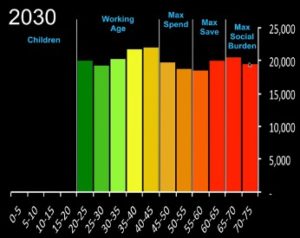For a couple decades, demographic experts have been pointing out a potential stock market risk from the Baby Boomer generation. The theory goes, beginning in the year 2017, the first of the Baby Boomers will be turning age 70 ½. Anyone with an IRA must begin withdrawing money from their account once they reach this age, or pay a stiff penalty. For the next 15 years, the selling pressure of Baby Boomers liquidating some of their IRA investment holdings will be larger than the buying pressure from the next demographic-age bracket. Could this trigger a stock market crash, a downtrend, or prevent the markets from advancing any further?
Since the stock market is already at a high valuation, below are a couple conservative investment candidates that you may want to consider.
- Ticker symbol, “TAIL.” This is a brand new Exchange Traded Fund (ETF) by Cambria Research that will profit from a stock market decline. Most of the fund’s assets are earning interest in U.S. Treasury debt. But a portion of the fund will purchase out-of-the-money put-options on the U.S. stock market, the S&P 500 index. The fund expects to lose a little money each year that the stock market is flat or up, but profit greatly from the put options in the event of a sharp stock-market selloff. You can learn more about this at http://www.cambriafunds.com/tail.aspx
- Ticker symbol, “DIVY.” This is a 2-year old ETF that uses options to scalp dividend growth out of the stock market with close to no price risk. This fund distributes a large special dividend at the end of the year. When this option-model is back tested over 10 years, the financial result triples the return of the S&P 500 with less volatility. You can learn more about this fund at http://www.realityshares.com/funds/divy
As always, you must perform your own due diligence to determine if these may be an appropriate fit for your portfolio. If you decide that they are something to invest in, never invest more than 5% of your portfolio into any one alternative strategy; such as these funds.

